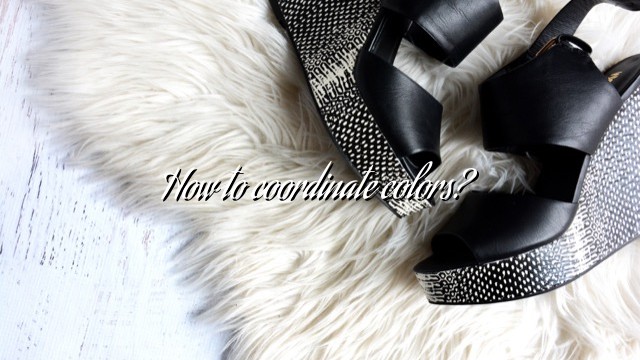The coordination of colors of clothing is a kind of applied arts, which connects between theoretical aesthetics and utilitarian arts. Before entering into this type of art, we must understand the relationship between aesthetics and utilitarian art and what they are before getting into the subject of coordinating the colors of clothing, The foundation and the solid base in the way we coordinate the colors of our clothes. Let us start with what is meant by the science or the art of theoretical beauty, which is based on the theories of the various color aesthetics which, if applied, give us a sense of beauty. These theories are the most important of which is the theory of harmony of colors, and we mean the convergence of colors in what is known as the circle of colors. Blue, green, and pistachio). Among these aesthetic theories is the theory of the gradation of one color, such as brown and its variants or derivatives of colors such as dark brown, medium brown, orange and desert, or blue color and its gradations such as dark blue, Wei.
This is in relation to aesthetics, which is closer to the visual arts than drawing, color, ornamentation, etc. The arts of utilitarianism are those arts that match the visual or aesthetic arts, as we mentioned earlier, the need of man and his environment, which is related to it in the first place and the society’s view of the concept of aesthetics, The extent of its usefulness to this person, in other words, for example, in some societies, in which human beings tend to live in warm colors, such as red and yellow, and their derivatives, because of the warm climate of these countries. In European societies we see a tendency to warm colors, such as blue color and its gradations such as blue and azaleas, due to the nature of the European countries and their cold and snowy climate. In our Arab societies, we see a tendency towards warm colors, while not neglecting cold colors due to the nature of the Arab country and its desert climate. As the son of his environment says.
There is another factor that is very important is the extent of taste of the person and the nature of his skin (brown – white ) as well as the physical characteristics of this person as the length and size and color of hair as well as the color of the eyes.
For example, but not limited to the person with dark skin should choose cold colors or cold light, such as blue or very light blue and close to cold colors to give the impression of lightening the skin and color harmony, which achieves as we mentioned earlier aesthetic color of clothing related to useful art.
The mother of the white-skinned person should choose neutral colors close to the time, warm, because it is more appropriate in light of the nature of his skin.
Finally, as we see, the coordination of colors of clothing is linked to multiple factors as I mentioned earlier
– Human environment and society and their concept of aesthetic colors.
– The extent of human understanding of the relationship between aesthetic arts theory and applied utilitarian arts.
– Artistic taste acolor in the person.
In general, what is beautiful in a society is not a requirement that it be beautiful in another society. People have tastes as they say.
